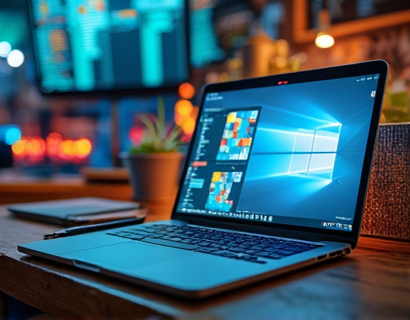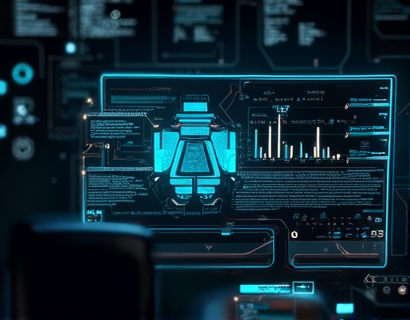Decentralized File Management: Maximizing Collaboration and Security for Businesses and Teams
In the digital age, efficient and secure file management has become a cornerstone for businesses and teams aiming to enhance collaboration and productivity. The traditional centralized file management systems, while familiar, often fall short in addressing the complexities of modern work environments. These systems can become bottlenecks, especially when multiple users need simultaneous access to critical files. The emergence of decentralized file management solutions offers a transformative approach, redefining how organizations handle their data. This article delves into the benefits and mechanisms of decentralized file management, highlighting how a cutting-edge online platform can streamline file management, boost productivity, and ensure robust security.
Decentralized file management leverages blockchain technology and distributed networks to create a more resilient and efficient system for storing and sharing files. Unlike traditional centralized systems where data is stored on a single server, decentralized systems distribute data across multiple nodes in a network. This distribution not only enhances security by eliminating a single point of failure but also improves accessibility and speed, as files can be retrieved from multiple locations simultaneously.
The core principle of decentralization in file management is to empower users by giving them direct control over their data. In a decentralized system, users can store files on their devices or on a peer-to-peer network, reducing reliance on centralized servers. This shift not only enhances data sovereignty but also minimizes the risk of data breaches and loss. For businesses and teams, this means a more secure and reliable way to manage critical information.
Enhanced Security Measures
Security is a paramount concern for any file management solution, especially in a decentralized environment. Traditional centralized systems are often targeted by cyberattacks due to their single point of entry. In contrast, decentralized systems distribute data across multiple nodes, making it significantly harder for attackers to compromise the entire system. Each node in the network maintains a copy of the data, and any attempt to alter or delete files would require consensus from a majority of the nodes, a scenario that is computationally infeasible.
Moreover, decentralized platforms often employ advanced cryptographic techniques to ensure data integrity and confidentiality. Files can be encrypted before being stored and decrypted only by authorized users with the correct private keys. This end-to-end encryption ensures that even if a node is compromised, the data remains secure. For businesses handling sensitive information, such as financial data or intellectual property, this level of security is invaluable.
Improved Collaboration and Accessibility
One of the most significant advantages of decentralized file management is the enhancement of collaboration among team members. In a decentralized system, files are accessible to authorized users from anywhere in the world, at any time, as long as they have an internet connection. This global accessibility fosters real-time collaboration, breaking down geographical barriers and enabling teams to work together seamlessly.
Decentralized platforms often feature intuitive interfaces that simplify the process of sharing and collaborating on files. Users can grant specific permissions to team members, controlling who can view, edit, or comment on a file. This granular control ensures that sensitive information is shared only with trusted individuals, maintaining data integrity and confidentiality. Additionally, version control is inherently managed in decentralized systems, allowing teams to track changes and revert to previous versions if necessary.
Scalability and Performance
Scalability is another critical factor for businesses and teams as they grow and evolve. Centralized file management systems can struggle to scale efficiently, leading to performance issues and increased costs. Decentralized platforms, on the other hand, are designed to scale horizontally by adding more nodes to the network. This scalability ensures that as the number of users and files grows, the system can handle the increased load without compromising performance.
Performance is further enhanced by the distributed nature of the network. Files can be retrieved from the nearest node, reducing latency and improving load times. This distributed architecture not only optimizes performance but also enhances reliability, as the network can continue to function even if some nodes go offline.
User-Friendly Interface and Ease of Use
Despite the complexity of decentralized technology, a well-designed online platform can provide a user-friendly interface that makes file management intuitive and straightforward. The interface should be clean and intuitive, guiding users through the process of uploading, sharing, and collaborating on files without requiring extensive technical knowledge.
Key features of such a platform include drag-and-drop file uploads, clear folder structures, and real-time notifications for file updates and permissions changes. Advanced search functionalities allow users to quickly locate files, even in large collections. For teams new to decentralized file management, the platform can offer guided tutorials and support resources to ensure a smooth transition.
Case Studies and Real-World Applications
To better understand the practical benefits of decentralized file management, consider a few real-world applications. A global software development team working on a large-scale project can use a decentralized platform to store and share codebases, documentation, and assets. Each developer can access the latest version of the code from any location, ensuring that everyone is working with the most up-to-date information. This eliminates the risk of version conflicts and speeds up the development process.
In the healthcare industry, patient records and medical images can be securely stored and shared among healthcare providers using a decentralized platform. This ensures that critical information is accessible to authorized personnel in real-time, improving patient care and operational efficiency. The immutable nature of the decentralized ledger also provides a tamper-proof record of patient data, enhancing compliance with regulatory standards.
Challenges and Considerations
While the benefits of decentralized file management are clear, there are several challenges and considerations that organizations should be aware of. One of the primary challenges is the initial setup and migration of existing files to a decentralized system. This process can be time-consuming and requires careful planning to ensure data integrity and security during the transition.
Another consideration is the need for user education and training. Decentralized systems operate differently from traditional centralized solutions, and users must be trained to leverage the full potential of the platform. Organizations should invest in comprehensive training programs to ensure a smooth adoption process.
Additionally, while decentralized systems offer enhanced security, they are not immune to all risks. Organizations must still implement robust security policies and best practices, such as regular software updates, strong password policies, and employee training on cybersecurity threats.
Future Trends and Innovations
The landscape of decentralized file management is rapidly evolving, with ongoing innovations set to further enhance its capabilities. One area of focus is the integration of artificial intelligence and machine learning to optimize file organization and retrieval. AI can analyze usage patterns and suggest optimal folder structures, making it easier for users to find and manage files.
Another exciting development is the incorporation of Web3 technologies, such as non-fungible tokens (NFTs) and decentralized applications (dApps), to create more interactive and secure file management experiences. These technologies can enable new forms of collaboration and data sharing, opening up new possibilities for businesses and teams.
As the technology matures, we can expect to see more seamless integration with existing enterprise systems, such as CRM and ERP platforms, creating a cohesive and interconnected ecosystem for data management.
Conclusion
Decentralized file management represents a significant leap forward in how businesses and teams handle their data. By leveraging the principles of decentralization, robust security, and user-friendly interfaces, these platforms offer a compelling alternative to traditional centralized systems. The enhanced collaboration, improved security, and scalable performance make them an attractive solution for organizations looking to optimize their information management processes. As the technology continues to evolve, the future of file management is undoubtedly decentralized, promising a more secure, efficient, and collaborative work environment.











































